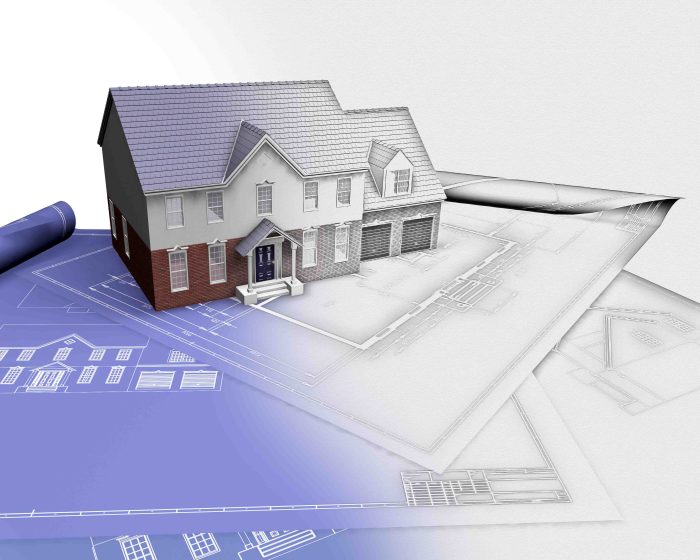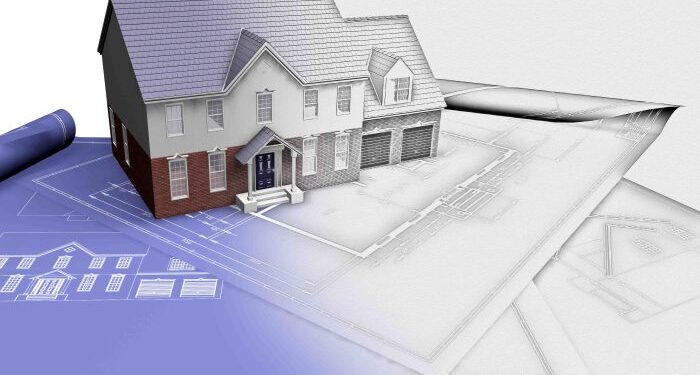Embark on a journey through the innovative world of residential design planning with the impactful use of 3D modeling. Explore how this technology has transformed the way architects, designers, and clients visualize and bring their ideas to life.
Delve into the realm of creativity and efficiency as we uncover the various aspects of 3D modeling in residential design planning.
Importance of 3D Modeling in Residential Design Planning

D modeling plays a crucial role in the initial planning stages of residential design, offering numerous benefits to architects, designers, and clients alike. By leveraging advanced technology to create realistic visual representations of the proposed design, 3D modeling enhances the overall planning process in various ways.
Enhanced Visualization
Utilizing 3D modeling software allows professionals to create detailed and lifelike renderings of the design, providing a clear and realistic visualization of the final product. This enhanced visual representation helps architects, designers, and clients better understand the spatial layout, proportions, and aesthetic elements of the project, leading to more informed decision-making.
Streamlined Design Process
D modeling enables designers to quickly iterate on different design ideas, test various configurations, and explore different materials and finishes. This iterative process helps streamline the design phase by allowing for efficient exploration of multiple design options, ultimately leading to a more refined and well-thought-out final design.
Improved Communication
By presenting clients with detailed 3D models and renderings, designers can effectively communicate their design vision and ideas. Clients can visually see how the design will look and feel, making it easier for them to provide feedback and make decisions.
This improved communication fosters collaboration and ensures that everyone involved is on the same page throughout the design process.
Early Identification of Design Flaws
One of the key advantages of 3D modeling is its ability to identify potential design flaws early on in the planning process. By simulating the design in a virtual environment, designers can detect issues such as spatial constraints, structural problems, or aesthetic inconsistencies before construction begins.
This proactive approach helps prevent costly revisions and delays down the line, ultimately saving time and resources.Overall, the integration of 3D modeling in residential design planning offers a range of benefits that contribute to a more efficient, effective, and successful design process.
From enhanced visualization and streamlined design to improved communication and early error detection, 3D modeling plays a vital role in shaping the future of residential design.
Tools and Software for 3D Modeling in Residential Design
When it comes to 3D modeling in residential design, there are various tools and software available to architects and designers. These tools play a crucial role in visualizing and creating accurate representations of design concepts before construction begins.
Popular 3D Modeling Software
- Autodesk Revit: Known for its Building Information Modeling (BIM) capabilities, Revit allows users to create detailed 3D models integrated with data for efficient design collaboration.
- SketchUp: A user-friendly software that enables quick conceptualization and visualization of designs, making it a popular choice for beginners and professionals.
- 3ds Max: Ideal for rendering realistic visualizations, 3ds Max offers advanced tools for creating detailed interiors and exteriors of residential spaces.
Comparison of Software Options
- Revit vs. SketchUp: While Revit is more suited for complex projects with its BIM capabilities, SketchUp excels in creating simple and quick 3D models for residential design.
- SketchUp vs. 3ds Max: SketchUp is preferred for its ease of use and speed in creating initial design concepts, whereas 3ds Max is favored for its advanced rendering capabilities for detailed visualizations.
- Revit vs. 3ds Max: Revit focuses on collaboration and data integration, making it ideal for architectural design, while 3ds Max is better suited for creating high-quality visualizations and animations.
Advantages and Limitations of Specific Tools
- Revit: Advantages include BIM integration for data-rich models and efficient collaboration. Limitations may include a steeper learning curve for beginners.
- SketchUp: Advantages include ease of use and quick modeling capabilities. Limitations may include less detailed renderings compared to other software.
- 3ds Max: Advantages include advanced rendering tools for realistic visualizations. Limitations may include a higher level of complexity for beginners.
Integration into Design Workflow
- Using Revit for initial design concepts and collaboration, then exporting models to 3ds Max for detailed rendering.
- Starting with SketchUp for quick ideation and then refining models in Revit for BIM integration and data accuracy.
- Combining SketchUp and 3ds Max for a balance between quick conceptualization and high-quality visualizations in residential design projects.
Collaborative Design Process with 3D Modeling
D modeling plays a crucial role in fostering collaboration between architects, designers, and clients in residential design planning. By providing a visual representation of the proposed design, 3D models enhance communication and understanding among all parties involved.
Facilitating Collaboration
- 3D modeling allows architects and designers to present their design concepts in a more tangible and realistic manner, helping clients visualize the final outcome.
- Clients can provide feedback on the design more effectively when presented with 3D models, leading to better communication and alignment of expectations.
Real-time Adjustments during Meetings
- During client meetings, real-time adjustments can be made to 3D models based on feedback, allowing for quick modifications and iterations to the design.
- This immediate feedback loop enables designers to address client concerns promptly, leading to a more collaborative and efficient design process.
Impact on Project Timelines and Outcomes
- Collaborative 3D modeling can streamline the design process, reducing the need for extensive revisions later on and potentially shortening project timelines.
- By involving clients in the design process through 3D modeling, the final outcome is more likely to meet their expectations, resulting in higher satisfaction and successful project outcomes.
Trends and Innovations in 3D Modeling for Residential Design
The use of 3D modeling in residential design has evolved rapidly, with various trends and innovations shaping the industry.
Integration of Virtual Reality (VR) and Augmented Reality (AR)
The integration of VR and AR technologies in 3D modeling processes has revolutionized the way designers and clients interact with residential designs. VR allows users to experience a fully immersive environment, while AR overlays digital elements onto the real world.
This integration enables clients to visualize and experience their future homes in a more interactive and realistic manner, leading to better decision-making and design outcomes.
Innovative Uses of 3D Modeling for Sustainable and Eco-Friendly Designs
Designers are increasingly using 3D modeling to create sustainable and eco-friendly residential designs. By simulating energy usage, material efficiencies, and environmental impacts, designers can optimize their designs for sustainability. For example, 3D modeling can be used to analyze natural lighting, ventilation, and energy consumption, leading to the creation of more environmentally friendly homes.
Advancements in 3D Printing Influencing Residential Design Planning
Advancements in 3D printing technology have had a significant impact on residential design planning. Designers can now create intricate architectural models, furniture pieces, and even entire building components using 3D printing. This technology allows for greater customization, faster prototyping, and more cost-effective production processes in residential design projects.
Final Wrap-Up
As we conclude our discussion on The Role of 3D Modeling in Residential Design Planning, it's evident that this technology is a game-changer in the architecture and design industry. From enhancing collaboration to pushing the boundaries of creativity, 3D modeling continues to shape the future of residential design.
Top FAQs
How does 3D modeling benefit the initial planning stages of residential design?
3D modeling allows designers to create detailed visualizations of their ideas, helping them identify potential design flaws early on and streamline the planning process.
What are some popular tools and software used for 3D modeling in residential design?
Popular tools include SketchUp, AutoCAD, and Revit, each offering unique features tailored to the needs of architects and designers.
How does 3D modeling enhance collaboration between architects, designers, and clients?
By presenting design concepts in a visual and interactive manner, 3D modeling fosters better communication and feedback exchange among all stakeholders.
What are some emerging trends in 3D modeling technology for residential design?
Emerging trends include the integration of virtual reality (VR) and augmented reality (AR) to create immersive design experiences, as well as the use of 3D printing for prototyping and sustainable designs.




